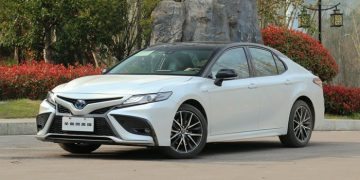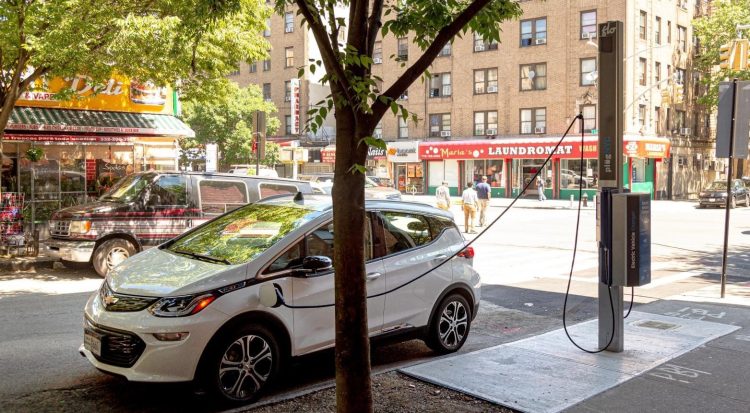In the face of rapid urbanization, growing environmental concerns, and the urgent need to address climate change, cities worldwide are increasingly exploring innovative solutions to reduce their carbon footprint and improve air quality. Among these solutions, the establishment of zero-emission zones (ZEZs) is emerging as a powerful policy tool to foster cleaner and more sustainable urban environments. By restricting or entirely banning the entry of polluting vehicles into specific urban areas, ZEZs encourage the adoption of electric vehicles (EVs), which produce no direct tailpipe emissions, thus contributing to cleaner air and a reduction in greenhouse gases.
This article explores the role of zero-emission zones in driving EV adoption in urban areas, analyzing the policies that make ZEZs effective, the impact they have on local air quality, and the broader environmental benefits. We will also examine how these policies influence the behavior of both consumers and automakers and evaluate whether zero-emission zones are truly the key to achieving cleaner cities and a greener future.
1. Understanding Zero-Emission Zones (ZEZs)
Zero-emission zones are areas within urban environments where only zero-emission vehicles are allowed to enter, operate, or park. These zones are often enforced through the use of automated license plate recognition systems or other monitoring technologies that detect the type of vehicles entering these areas. Depending on the specific regulations of the zone, these areas can either completely ban internal combustion engine (ICE) vehicles or impose substantial penalties for non-compliance.
The primary objective of ZEZs is to reduce air pollution, mitigate greenhouse gas emissions, and promote sustainable mobility. By incentivizing the use of electric vehicles, which produce no tailpipe emissions, these policies help improve air quality and reduce the negative health impacts associated with airborne pollutants such as nitrogen oxides (NOx) and particulate matter (PM).
In addition to electric vehicles, ZEZs may also encourage the use of other low-emission alternatives, such as hydrogen fuel-cell vehicles and public transportation powered by clean energy sources.
2. The Global Growth of Zero-Emission Zones
As concerns over urban air pollution and climate change grow, several cities around the world have implemented or announced plans for zero-emission zones. These zones are becoming an increasingly important part of urban policies aimed at sustainable mobility. Let’s examine some of the most notable global examples where ZEZs have already been established or are under consideration:
2.1. London, United Kingdom: A Pioneer in ZEZ Implementation
London is often cited as one of the leading examples of a city adopting zero-emission zones as part of its strategy to reduce air pollution and greenhouse gas emissions. The city introduced the Ultra Low Emission Zone (ULEZ) in 2019, which covers a large part of Central London and requires vehicles to meet stringent emissions standards or face daily charges. The success of the ULEZ has led to discussions about expanding the zone to other areas of the city and eventually making all of London a zero-emission zone.
London’s low-emission and zero-emission zones aim to reduce harmful air pollutants, such as nitrogen dioxide (NO2) and particulate matter (PM10), which are common byproducts of diesel and gasoline-powered vehicles. The ULEZ has led to a significant reduction in vehicle emissions, making it an effective model for other cities seeking to achieve similar goals.
2.2. Oslo, Norway: Leading the Way in Electrification
Norway’s capital, Oslo, has been at the forefront of electric vehicle adoption and environmental policies. Oslo has implemented various zero-emission policies, including restrictions on fossil fuel vehicles and incentives for EV owners, such as free parking and access to bus lanes. The city has set ambitious goals to reduce carbon emissions, with plans to make the city center entirely car-free by 2024.
As a result, Oslo has witnessed one of the highest rates of electric vehicle adoption in the world, with over 60% of new cars sold in the city being fully electric. These policies have helped to create a clean, low-emission environment while also encouraging the public and private sectors to invest in electric vehicle infrastructure and battery technology.
2.3. Berlin, Germany: A Gradual Shift Toward Zero Emissions
In Berlin, the idea of zero-emission zones has been gaining traction as part of the city’s overall green transformation. The city has pledged to reduce carbon emissions and address the public health crisis caused by poor air quality. Berlin has taken a phased approach, implementing low-emission zones and targeting areas with the highest pollution levels for the introduction of zero-emission zones.
The German capital has also seen increased adoption of electric vehicles as the infrastructure for charging points expands across the city. Berlin’s approach has been closely tied to its goal of becoming a leader in sustainable mobility by reducing both carbon emissions and traffic congestion.
2.4. Shanghai, China: Integrating EVs into Urban Mobility
In Shanghai, one of China’s largest cities, the government is aggressively pushing for a shift to electric vehicles as part of its green city agenda. The city has designated several areas as zero-emission zones and is encouraging the use of electric buses, taxis, and delivery vehicles. With government support, including subsidies for EV purchases and the expansion of EV charging infrastructure, Shanghai aims to become a model for electric mobility in the region.
2.5. California, United States: Expanding Zero-Emission Zones Across the State
California has been a global leader in promoting zero-emission vehicles and has implemented several zero-emission zones across major cities like Los Angeles and San Francisco. The state has set ambitious goals to transition to 100% zero-emission vehicle sales by 2035 and is actively investing in infrastructure and regulatory measures to support this transition.
California’s Zero-Emission Vehicle (ZEV) Program is one of the most comprehensive in the world, and its policies are influencing cities across the United States to adopt similar measures. Additionally, California’s policies incentivize EV adoption by offering significant rebates and tax incentives for both consumers and manufacturers.

3. The Impact of Zero-Emission Zones on EV Adoption
Zero-emission zones are instrumental in fostering the adoption of electric vehicles in urban areas. These zones work by creating demand for zero-emission vehicles while simultaneously making it costly or impossible for consumers to rely on traditional gasoline or diesel-powered vehicles. The combination of financial incentives, such as tax credits and subsidies, with restrictions on polluting vehicles in certain areas, accelerates the transition to cleaner modes of transportation.
3.1. Changing Consumer Behavior
One of the primary benefits of zero-emission zones is their ability to influence consumer behavior. With the implementation of such zones, consumers are more likely to consider purchasing electric vehicles as a practical and sustainable option, especially if the cost of entry to zero-emission zones is prohibitive for non-EV owners. By offering benefits to electric vehicle owners, such as access to restricted areas, free parking, and reduced tolls, cities can incentivize the switch to EVs.
3.2. Automaker Adaptation and Innovation
The establishment of zero-emission zones also has a significant impact on automakers. As cities enforce stricter emissions regulations, automakers are increasingly compelled to shift their production towards electric vehicles to meet the demand for cleaner transportation. This results in an accelerated pace of innovation in electric vehicle technology, including improvements in battery life, charging infrastructure, and overall vehicle efficiency.
Many car manufacturers are now focusing heavily on electric vehicle production to meet both regulatory requirements and consumer demand. As these companies invest in EV research and development, consumers benefit from more affordable and advanced electric vehicle options.
4. The Environmental and Health Benefits of Zero-Emission Zones
Zero-emission zones offer significant environmental and public health benefits. By reducing the number of polluting vehicles on the road, ZEZs help to lower air pollution levels, reduce greenhouse gas emissions, and combat climate change. The health benefits of cleaner air are particularly important in urban areas, where high levels of pollution can lead to respiratory diseases, cardiovascular problems, and premature death.
4.1. Improved Air Quality
The most immediate and visible benefit of zero-emission zones is improved air quality. Cities that have implemented ZEZs have reported significant reductions in airborne pollutants, such as nitrogen oxides (NOx), carbon monoxide (CO), and particulate matter (PM). These pollutants are linked to a variety of health issues, and their reduction can lead to healthier communities and lower healthcare costs.
4.2. Reduced Carbon Footprint
Zero-emission zones also play a crucial role in reducing the overall carbon footprint of cities. By promoting the adoption of electric vehicles, which are powered by clean energy, cities can significantly reduce their greenhouse gas emissions, contributing to global efforts to mitigate climate change. Additionally, many cities are combining ZEZs with initiatives to promote renewable energy sources, such as solar and wind, which further enhances the environmental benefits of these policies.
5. Challenges and Future Directions
Despite the clear benefits of zero-emission zones, there are several challenges to their successful implementation. One of the main obstacles is the cost of transitioning to zero-emission transportation, both for consumers and for cities that need to invest in EV infrastructure. Ensuring equity in the rollout of these zones is also critical, as access to electric vehicles and charging infrastructure may be limited in lower-income areas.
In the future, the expansion of charging infrastructure, the reduction of EV costs, and the integration of renewable energy into urban mobility systems will be essential to the success of zero-emission zones. Additionally, policymakers will need to consider how to incorporate public transportation and shared mobility services into the equation, as these modes of transportation can also contribute to cleaner cities.
6. Conclusion: A Cleaner, Greener Future for Cities
Zero-emission zones represent a powerful policy tool in the pursuit of cleaner, more sustainable cities. By reducing the number of polluting vehicles on the road, encouraging the adoption of electric vehicles, and improving air quality, these zones are making urban areas more livable and contributing to global climate goals. While challenges remain, the continued expansion of zero-emission zones, along with supportive policies for EV adoption and infrastructure development, can help pave the way for a greener, more sustainable future for urban populations.











































